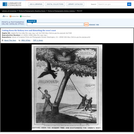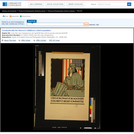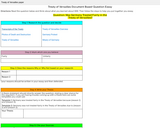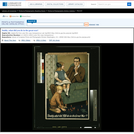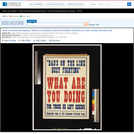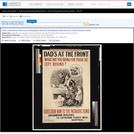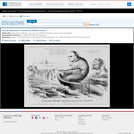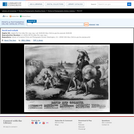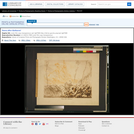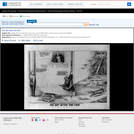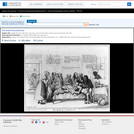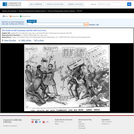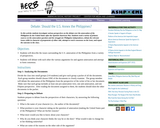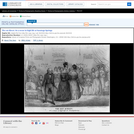
One of two prints by "HD" (identified by Weitenkampf and others tentatively as Henry Dacre) based on incidents during President Van Buren's visit to the resort at Saratoga Springs, New York, during the summer of 1839. (See also "The Meeting at Saratoga" no. 1839-4.) Although Van Buren is known to have stayed at Saratoga on his tour of New York State, it is not clear to what degree Dacre's scenes are imaginary or contrived for satirical effect. Here Martin Van Buren is snubbed by the widow of former political rival DeWitt Clinton. In a room filled with elegantly dressed men and women, Van Buren says to Mrs. Clinton, "Stay Madam, I would beg some words with you." Mrs. Clinton, turning away, is asked by her companion, "Mrs. C...... why did you not speak to him, when he look'd so very Pleasant?" To which she responds, "I! I! speak to the ........ who persecuted my husband to the day of his Death!" Mrs. Clinton's refusal to speak to Van Buren at Saratoga, on the grounds that he had allegedly dissuaded former President Jackson from visiting her, was widely reported in the New York press. |Lith. of H.R. Robinson, 52 Cortlandt St.|Signed with monogram: HD (Henry Dacre?).|Title appears as it is written on the item.|Weitenkampf, p. 59.|Forms part of: American cartoon print filing series (Library of Congress)|Published in: American political prints, 1766-1876 / Bernard F. Reilly. Boston : G.K. Hall, 1991, entry 1839-3.
- Subject:
- History
- U.S. History
- Material Type:
- Diagram/Illustration
- Primary Source
- Provider:
- Library of Congress
- Provider Set:
- Library of Congress - Cartoons 1766-1876
- Date Added:
- 06/13/2013
